1870-79

1871
Hong Kong Zoological And Botanical Gardens
(Hong Kong China) As the oldest park in the territory, the Hong Kong Zoological and Botanical Gardens (HKZBG) was fully completed and opened to the public in 1871. The HKZBG is nicknamed by locals as Bing Tau Fa Yuen (literally the Head of Soldiers’ Gardens) because it was the former site of the Government House for the Governor, who served as the Commander-in-chief of Hong Kong and was thus referred to as “Bing Tau” (the head of soldiers). Used to house an assemblage of native plants for collection and research in its early years, it had been known as the Botanic Gardens. Since 1876, the HKZBG has been building its zoological collection comprising birds and mammals.
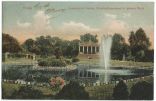
1871
Poznan Old Zoo
(Poznan, Poland) After the construction of the Stargardzko-Poznań Railway station , a group of regulars gathered in the garden of the station restaurant to play bowling. In 1871, the group decided to celebrate the fiftieth birthday of the president of the bowling club in an unusual way - they agreed that each of them would give the birthday person an animal. At that time, a small zoo was created in the yard of the station restaurant, where they managed to collect: a goat, a sheep, a miniature pig, a cat, a rabbit, a squirrel, a goose, a duck, a hen, a peacock, and a monkey bought from the wandering Roma and a trained bear.

1872
Lahore Zoo
(Lahore, Pakistan) Lahore Zoo had its beginnings in a small aviary donated by Lala Mela Ram in 1872 to the Lahore Municipal Corporation.

1872
Roger Williams Park Zoo
(Providence, Rhode Island, USA) The Roger Williams Park Zoo first opened in 1872 as a limited collection of small animals, including raccoons, guinea pigs, mice, squirrels, rabbits, hawks, peacocks, and anteaters.
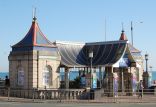
10th August 1872
Brighton Sea Life
(Brighton, South East England, United Kingdom) Brighton Aquarium was the brainchild of Eugenius Birch, the pier engineer and designer of Brighton’s West Pier, who conceived the idea following a visit to Boulogne Aquarium. Erected on the approach roadway to the Chain Pier, the Aquarium necessitated the construction of a new sea-wall and promenade, the Madeira Road, which was commenced in 1869. The whole project was completed in 1872 at a cost of £130,000, and the Aquarium was inaugurated by Prince Arthur at Easter although there were no exhibits at the time. It was formally opened to the public on 10 August 1872 by the mayor, Cordy Burrows.
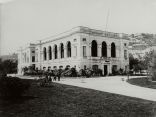
1872
Acquario di Stazione Zoologica Anton Dohrn
(Napoli Aquarium, Italy) Founded in 1872 by the German naturalist and zoologist Anton Dohrn, born in Szczecin (present-day Poland) in 1840 and graduated in Berlin in Natural Sciences, for the knowledge and study of the flora and fauna of the sea, it soon represented one of the most authoritative scientific institutions in the city, alongside those built in the Bourbon era: the Royal Botanical Garden in Via Foria and theAstronomical Observatory of Capodimonte. It was the first institution of non-Bourbon derivation and was founded in Naples by choice of Dohrn himself, fascinated by the city and interested in the richness of the gulf. The Aquarium of Naples with the adjoining Zoological Station became a world center for the study of marine biology. After visiting a recently opened aquarium in Berlin, Dohrn thought that opening an aquarium in Naples for a fee would guarantee the laboratory enough money to pay the salary of a permanent assistant. Naples, with a population of 500,000, was one of the largest and most attractive cities in Europe, and also had a considerable flow of tourists (30,000 per year) who could have been potential visitors to the aquarium. Dohrn managed to overcome the doubts of the city authorities and persuaded them to give him a small plot of land on the seashore, in the Villa Comunale, free of charge, on condition that he build the zoological station at his own expense. Dohrn opened the station to visiting scientists in September 1873, and to the general public on 12th January 1874.
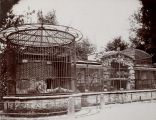
3rd July 1874
Zoo Basel
(Basel, Switzerland) In 1870, the Ornithologiegesellschaft together with the city of Basel started a project of establishing a zoo where visitors could see Swiss and European animals. Zoo Basel emerged from that project.

23rd February 1875
Buffalo Zoo
(Buffalo, New York, USA) The Zoo traces its history to 1870, when Jacob E. Bergtold, a prominent furrier, presented a pair of deer to the City of Buffalo. The deer were housed on a small piece of land in Delaware Park. Five years and a few animals later, the first permanent building was erected, signifying the establishment of the Buffalo Zoological Gardens in 1875. Over the next fifteen years, a flock of sheep, a pair of bison and eight elk were added.
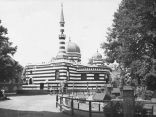
26th June 1875
Allwetterzoo
(Münster, North Rhine-Westphalia, Germany) On July 25, 1871, today's zoo association was founded as the “Westphalian Association for Bird Protection, Poultry and Songbird Breeding”. In December 1873, Hermann Landois published his “Call for the Establishment of a Westphalian Zoological Garden in Münster,”[4] and a society was founded to establish a zoo. The Westphalian Zoological Garden on Himmelreichallee was opened on June 26, 1875. The zoo founder's initial goals of exclusively showing "as many of the animals native to Europe as possible" soon had to meet the wishes of the zoo - a monkey house was erected 1876.

18th September 1875
Cincinnati Zoo & Botanical Gardens
(Cincinnati , Ohio, USA) In 1872, three years before the zoo's creation, Andrew Erkenbrecher and several other residents created the Society for the Acclimatization of Birds in Cincinnati to acquire insect-eating birds to control a severe outbreak of caterpillars. A collection of approximately 1,000 birds imported from Europe in 1872 was housed in Burnet Woods before being released. In 1873, members of the Society of Acclimatization began discussing the idea of starting a zoo and founded The Zoological Society of Cincinnati. One year later, the Zoological Society of Cincinnati purchased a 99-year lease on 65 acres (26 ha) in the cow pasture known as Blakely Woods. The Cincinnati Zoological Gardens officially opened its doors on September 18, 1875. Architect James W. McLaughlin, who constructed the zoo's first buildings, designed the earliest completed zoological exhibits in the United States. The zoo began with eight monkeys, two grizzly bears, three white-tailed deer, six raccoons, two elk, a buffalo, a laughing hyena, a tiger, an American alligator, a circus elephant, and over four hundred birds, including a talking crow. The first guide book about the Cincinnati Zoo was written in 1876 in German. The founders of the zoo, including its first general manager, were German immigrants and the city had quite a large German-speaking population.
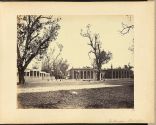
1st January 1876
Alipore Zoological Garden
(Kolkata, India) The zoo had its roots in a private menagerie established by Governor General of India, Richard Wellesley, established around 1800 in his summer home at Barrackpore near Kolkata, as part of the Indian Natural History Project. The first superintendent of the menagerie was the famous Scottish physician zoologist Francis Buchanan-Hamilton. The foundation of zoos in major cities around the world caused a growing thought among the British community in Kolkata that the menagerie should be upgraded to a formal zoological garden. Credence to such arguments was lent by an article in the now-defunct Calcutta Journal of Natural History's July 1841 issue. In 1873, the Lieutenant-Governor Sir Richard Temple formally proposed the formation of a zoo in Kolkata, and the Government finally allotted land for the zoo based on to the joint petition of the Asiatic Society and Agri-Horticultural Society. The zoo was formally opened in Alipore - a posh Kolkata suburb, and inaugurated on 1 January 1876 by Edward VII, then Prince of Wales. The initial stock consisted of the private menagerie of Carl Louis Schwendler (1838 – 1882), a German electrician who was posted in India for a feasibility study of electrically lighting Indian Railways stations. Gifts were also accepted from the general public. The initial collection consisted of the following animals: African buffalo, Zanzibar ram, domestic sheep, four-horned sheep, hybrid Kashmiri goat, Indian antelope, Indian gazelle, sambar deer, spotted deer and hog deer.

7th April 1876
Maryland Zoo
(Baltimore Zoo, Maryland, USA) The Maryland Zoo, formerly known as the Baltimore Zoo, was created by an act of the Maryland state legislature on April 7, 1876. Its origins in Druid Hill Park date to the early 1860s, well before its formal founding, when the Park Superintendent first began caring for a small collection of animals donated by City residents.

1877
Honolulu Zoo
(Honolulu Zoo, Hawaii, USA) It is also the only zoo in the United States that originated in a King’s grant of royal lands to the people. In 1876, King David Kalakaua, Monarch of Hawai‘i, made lands of the Leahi Crown Holdings available, “to the people of Hawai‘i.” The 300-acre parcel was primarily a marshland of old fishponds, lagoons and islands. In 1877 King Kalakaua dedicated Kapiolani Regional Park named for his consort Queen Kapiolani. Appointed Park Association members developed the land with the help of royal subsidies to display the King’s private bird collection and to feature a horseracing track.
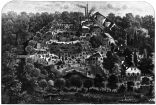
9th June 1878
Zoo Leipzig
On June 9th, Ernst Pinkert expanded the “Pfaffendorfer Hof” restaurant with a game enclosure.
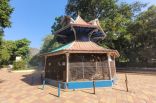
1879
Shri Sayaji Baug Zoo
(Vadodara, India) Sayaji Baug was dedicated to the citizens of Vadodara by Maharaja Sayaji Rao Gaekwad III in 1879. Sayajirao III built Sayaji Baug, well known as Kamati Baug, on the river Vishwamitri.
woaqzo@yahoo.com